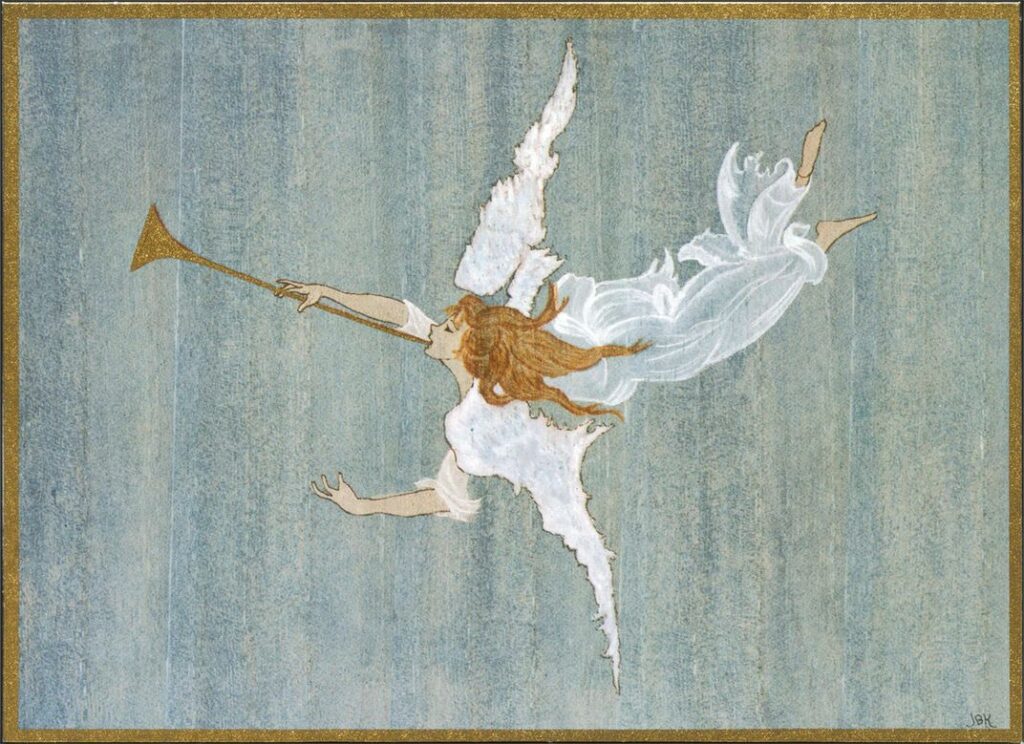In 1843, the year Charles Dickens first published A Christmas Carol, the British Postal System initiated the “Penny Post”, enabling the Sender to mail a card or letter anywhere in England for the cost of a penny stamp. Prior to that, although it was often cost prohibitive, people had mailed Christmas and New Year’s letters to close friends and family. But when these cheap stamps became available, more people than ever began sending Christmas letters. Because it was considered bad manners not to respond to mail during Victorian times, people who had a lot of friends found they couldn’t keep up and looked for a solution to their problem.
One prominent socialite and arts patron with this dilemma, Henry Cole, founder of the Victoria and Albert Museum, enlisted an artist friend to help. The artist created images on a triptych: the inner panel showed a family seated at a table celebrating the holiday and on both sides were images of people helping the poor. Henry Cole had a thousand copies printed on stiff cardboard approximately 5 by 3 inches. Each card had a generic greeting and a blank where Cole could fill in the name of the recipient. Although the idea didn’t catch on immediately, within a few years other prominent Victorians copied Cole’s idea and began sending out similar cards during the Christmas season.
In the U.S., the first credited Christmas card was created in 1875 in Boston. It was a painting of a flower and it read, “Merry Christmas”. During the coming years, most U.S. Christmas cards contained pictures of animals, nature, or autumn scenes rather than winter or religious scenes. Card publishers began organizing competitions and people collected these cards, like stamps or coins. Each season, newly designed cards were reviewed in newspapers.
The modern Christmas card is attributed to a Kansas City postcard printing company owned by the Hall brothers. The Hall Brothers Company (which later changed its name to Hallmark) adopted a book format for its cards so people had more room to write their holiday messages without having to write an entire letter. These cards measured 4 by 6 inches, were folded once and inserted in an envelope. This new format became the industry standard. The fronts of these cards included seasonal art and in the coming decades, Hallmark and their competitors hired artists like Salvador Dali, Grandma Moses, and Norman Rockwell to design their cards.

In 1963, First Lady Jacqueline Kennedy created two paintings for Hallmark to display on a special edition of Christmas cards. One of these paintings is shown here. All proceeds from the sale of these cards were donated to the Kennedy Center in Washington, D.C.
Nowadays, Christmas cards are often produced by small publishers and artists. There are pop-up cards, photo cards, video cards, and audio cards as well as traditional paper cards. And, of course, there’s always the Christmas letter; not a Christmas card but I’d venture, just as welcomed and appreciated as any Christmas card.
[This blog post is derived from a 2015 article in Smithsonian Magazine]

